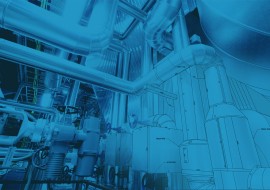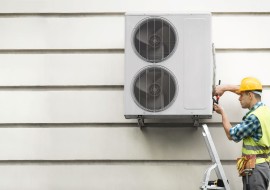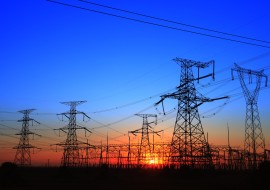How Can the United States Electrify Most Fossil Fuel Use By 2050?
Electrification—meeting energy needs with clean electricity instead of fossil fuels—is essential to reducing carbon emissions. The United States can electrify about 90% of its energy use mostly using existing technologies and building on recent policy momentum. Most forms of electrification can reduce energy use and carbon emissions. In many cases, electrification alone will reduce total costs (i.e., capital plus operating costs); in other cases, a path needs to be developed and pursued to ensure that electrification achieves this goal. As this transition accelerates, policymakers should ensure that low-income households are not left paying increasing costs for legacy fossil fuel assets.
Read the full policy brief: How the United States Can Electrify Most Fossil Fuel Use
Together, we can electrify about 90% of our fuel needs across sectors. Here’s how.

Transportation: Accelerate the adoption of electric vehicles.
- Implement federal tax incentives and emissions standards for electric vehicles. The Environmental Protection Agency’s recently proposed light-duty standards will result in approximately 60% of vehicle sales being electric by the early 2030s.
- Expand charging infrastructure and state zero-emissions vehicle requirements.
- Steadily grow the market so costs decline and electric vehicles become the least expensive option. Various ranges of battery electric vehicles can reach price parity with conventional vehicles by 2026–2033.
![]()
Buildings: Use heat pumps to electrify space- and water-heating.
- Provide incentives, assistance, and long-term policies to electrify existing homes and commercial buildings when existing furnaces, boilers, and air conditioners need to be replaced.
- Prioritize building shell upgrades to reduce the costs of electrification and increase comfort.
- Fund continued research and development to reduce costs and improve heat-pump performance.
- Enact building performance standards that gradually ramp up to zero-net-carbon goals.
- Set building codes to require heat pumps in new construction and eventually for replacement equipment.
![]()
Industry: Electrify most process heating using industrial heat pumps and other electric technologies.
- Transform the market so industrial heat pumps become standard by enticing more manufacturers to create more heat pump products and encouraging utilities and others to promote industrial heat pumps.
- Prioritize engineering assistance for companies wanting to convert to industrial heat pumps.
- Implement strategic energy management practices under which companies agree to continuously improve their facilities to reduce energy demand.
- Align sustainability goals with low-carbon product demand and future carbon pricing.
![]()
Utilities: Decarbonize the power sector.
- Expand utility investment in carbon-free electricity generation.
- Expand transmission and distribution to serve growing loads.
- Develop green hydrogen production using clean electricity; expand biofuel production and delivery.
![]()
Identify decarbonization strategies for the remaining 10% of fuel use.
- Hard-to-electrify applications include chemical feedstocks, high-temperature industrial processes, long-distance transport (more than 500 miles), and backup heat for buildings in very cold climates.
- Use biofuels and green hydrogen to address many of these applications; implement policies and incentives to drive the adoption of alternative fuels.
- Invest in research and development for innovative decarbonization technologies.
- Switch to lower-carbon products where possible (e.g., structural wood to replace some steel in buildings).







